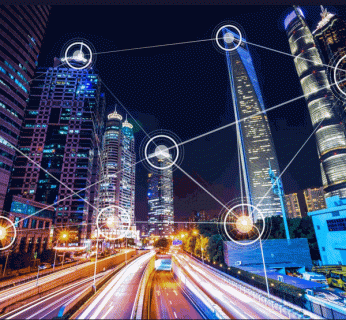We need to find a climate-friendly energy source that overcomes those current end-use sectors that are hard to electrify as they need to require high-intensity heat levels than coal and natural gas provides. These high-grade industry heat sectors, known as hard-to-abate, such as steel and chemicals, some heavy transport, aviation, shipping, agriculture, and industrial feedstocks, need to put in place a clean energy carrier.
Enter Hydrogen, reinvigorated and repurposed based on Renewables and new Technology designs
Presently Hydrogen is the only feasible route for at-scale decarbonization. It is a highly versatile, clean, and flexible energy vector. So many have evaluated the potential of hydrogen sector by sector that ramping up Hydrogen is needed to achieve any energy transition in an efficient and economically attractive way.

The problem today is that Hydrogen is simply not (yet) fit for large-scale deployment. The accepted wisdom is Hydrogen is a really good solution as a clean energy carrier, feedstock, and fuel. It can facilitate the extensive scale integration of renewables through conversion from H2O to pure Hydrogen (H2). Continue reading


 Further major Energy Solution Providers have announced their intentions of withdrawing from Coal.
Toshiba will stop taking orders for coal-fired power plants in line with growing global trends toward reducing carbon emissions. Toshiba holds 11% of the global thermal-power generation market, excluding China. This includes building power plants, producing steam turbines and providing maintenance. While the company will stop accepting new orders for coal-burning plants, it will build 10 stations under existing orders in Japan, Vietnam and other countries.
Siemens Energy, which builds steam turbines for power plants, will no longer take on new business to supply coal-fired powered stations, it said on 10th November 2020 making it the latest firm to scale back fossil fuel-related operations. Selling turbines to coal-fired power plants accounts for a low single-digit percentage of the company’s sales or roughly 820 million euros ($970 million) based on 2020 figures. According to a recent comment, the business was profitable. Siemens Energy has stated it will still meet existing commitments, including placed bids, and honour service contracts for combined heat and power stations but not engage in further coal business (Source Reuters).
Also Black & Veatch, an engineering and construction firm, has announced it also will cease participation in any further coal-based power design and construction. This shift allows its workforce to further accelerate the creation of solutions that help transform the industry, including helping clients reduce dependence on coal power assets and minimize the impact of those assets to the environment. The company says its transition away from any coal-related activity is about a commitment to sustainability and accelerating efforts toward a carbon-free energy future,
Further major Energy Solution Providers have announced their intentions of withdrawing from Coal.
Toshiba will stop taking orders for coal-fired power plants in line with growing global trends toward reducing carbon emissions. Toshiba holds 11% of the global thermal-power generation market, excluding China. This includes building power plants, producing steam turbines and providing maintenance. While the company will stop accepting new orders for coal-burning plants, it will build 10 stations under existing orders in Japan, Vietnam and other countries.
Siemens Energy, which builds steam turbines for power plants, will no longer take on new business to supply coal-fired powered stations, it said on 10th November 2020 making it the latest firm to scale back fossil fuel-related operations. Selling turbines to coal-fired power plants accounts for a low single-digit percentage of the company’s sales or roughly 820 million euros ($970 million) based on 2020 figures. According to a recent comment, the business was profitable. Siemens Energy has stated it will still meet existing commitments, including placed bids, and honour service contracts for combined heat and power stations but not engage in further coal business (Source Reuters).
Also Black & Veatch, an engineering and construction firm, has announced it also will cease participation in any further coal-based power design and construction. This shift allows its workforce to further accelerate the creation of solutions that help transform the industry, including helping clients reduce dependence on coal power assets and minimize the impact of those assets to the environment. The company says its transition away from any coal-related activity is about a commitment to sustainability and accelerating efforts toward a carbon-free energy future, 

 Smart infrastructure connects many parts of the city both physically and digitally. Services that capture the relevant information enable the deployment and introduction of the appropriate assets as the solutions.
Smart infrastructure connects many parts of the city both physically and digitally. Services that capture the relevant information enable the deployment and introduction of the appropriate assets as the solutions. When you stop and think, you realize that infrastructure, at its core, is undoubtedly about connectivity.
When you stop and think, you realize that infrastructure, at its core, is undoubtedly about connectivity.